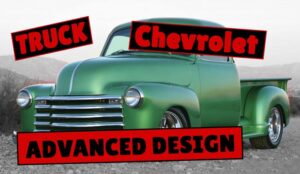Chevrolet Bel Air 4th Generation Origin
Chevrolet created a new design for its Bel Airline in 1959 which was a little different from the earlier 1958 Bel Air version. There wasn’t much of a change to the interior of the model cars.
The exterior of the car however was given a major distinctive feature at the rear. Furthermore, the wheelbase of the 1959 to 1960 model range was relatively longer in comparison with those of its predecessors.
The 1959 to 1960 Bel Airs retained the body style of the earlier 1958 version in that there was a 2-door sedan, a 2-door hardtop, a 4-door sedan, and a 4-door hardtop. However, the years 1959 to 1960 did not see the production of a model convertible.
Stay with me till the end, and I will let you in on how much this car would cost in today’s market.
Chevrolet Bel Air 4th Generation Overview
In 1959, the most visible aspect of the Chevrolet Bel Air’s new design was the tailfins at the rear which were shaped like wings.
Unlike the 1958 model which had a 117.5-inch wheelbase, the wheelbase of the 1959 model was 3500 mm (119 in) with a length of 210.9 inches as opposed to the previous 209.1-inch length of the previous model. This increase in length made the Chevy the longest car in the range of low-priced cars, a significant change since it used to be the shortest in 1957.
Furthermore, the thickness of the doors of the 1959 Bel Air was reduced and as such, it had more width on the outside by 76 mm (3 in) than the 1958 Bel Air and it was also wider on the inside by 130 mm (5 in).
The 1959 models continued with the “X” frame which was introduced in the previous model; however, the strength of the frame was increased and it was enlarged just so it supports the new body style.
Since 1953, the Bel Air series had been at the top. However, by 1959, they were now mid-range cars and although wagons were still in a class of their own, they still used the model number of the car series. For instance, the middle-range wagons which had the model number of the Chevrolet Bel Air were the Parkwood 6-passenger and Kingswood 9-passenger. There were only minor changes under the hood. The cars had various speed options which included special cams, lowered compression, and fuel injection which raised horsepower to 315. There was also an optional parking brake warning light.
There was also a minor external variation between the 1959, and 1960 models. The front end of the 1960 models was more restrained than their predecessors but they retained the cone tail lights from 1958 instead of the “cat’s eyes” that the 1959 models used. The body styles they offered were the same as the previous models’ which include sedans and hardtops.
The Impala series was the model range that had convertibles in 1960 and the rear window overhang, as well as the huge wraparound rear window, were features retained in the Bel Air Sport Sedan.
There were two tail lights on each side of the Bel Airs and Biscayne’s whereas, on the Impalas, there were three tail lights on either side.
Chevrolet Bel Air 4th Generation Engine
Three engines were used for the 4th generation Bel Air. The first was a 235.5 cu in (3.9 L) Blue Flame I6 engine which was replaced with a 283 cu in (4.6 L) Small-Block V8 engine which was capable of producing 315 hp. While the final one was a 348 cu in (5.7 L) Big-Block V8 engine which generated 335 hp at 5800 rpm.
Chevrolet Bel Air 4th Generation Production
The 4th generation Bel Airs used 3 transmissions which include a 3-speed manual transmission, a 4-speed manual transmission, and a 2-speed Powerglide automatic transmission.
The units of Bel Airs produced between 1958 and 1960 numbered around 447, 100 cars.
Chevrolet Bel Air 4th Generation Price
I did promise to give you the details concerning the price range of the 4th generation Bel Airs if you remained with me until the end. Now that we’re there, the price is currently somewhere between $39,720 and $42,000. that’s quite the sum, right?
That’s all for today guys. I’m sure you loved this article, so hit that share button, and stay tuned for more classic car articles.




